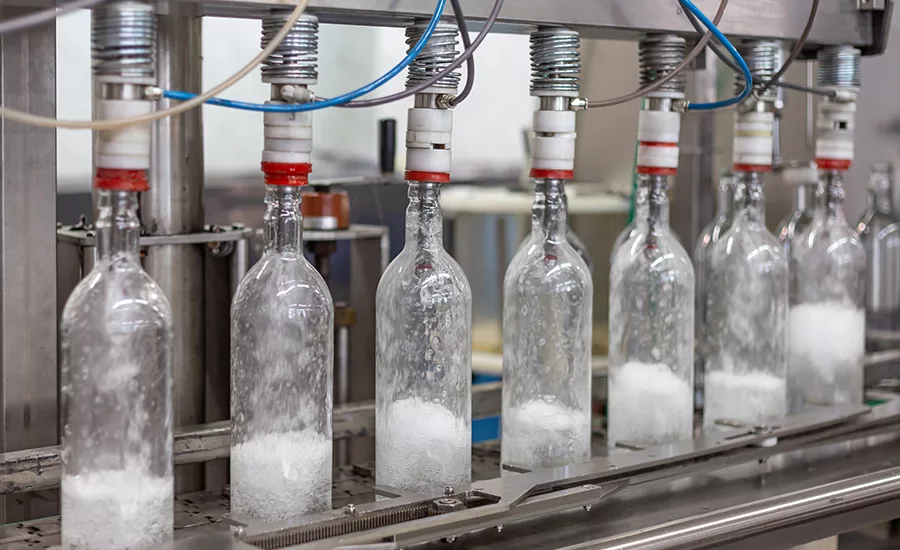Recalls
How Food Manufacturers Can Prevent Allergen Recalls

In 2023, the U.S. Food and Drug Administration issued 313 recalls and alerts, according to a recent report from the U.S. PIRG Education Fund.
Of those recalls, 49% resulted from undeclared allergens – up from 42% in 2022 and 38% in 2019. While some of that increase can be attributed to the addition of sesame to the list of allergens, it underscores the importance of strict allergen handling.
Trevor Craig, corporate senior technical director of engagement and consulting at Microbac Laboratories, covers developing a risk assessment, ensuring product label accuracy and creating a recall plan.
FOOD ENGINEERING: What are the most common allergens in recalled foods?
TC: Most recalls are related to the “Big 9” allergens, which include milk, eggs, fish, shellfish, tree nuts, peanuts, wheat, soybeans and sesame. Sesame was just added to that list a few years ago. These are the only allergens that require a statement on a label. Other ingredients are usually included in the ingredient list but are not required to have a separate allergen declaration like the “Big 9.” Some categories, such as tree nuts, shellfish and fish, are especially broad, encompassing numerous subcategories under them.
FE: What leads to recalls related to allergens?
TC: There are several reasons that might result in allergen recalls. Most often it’s because the allergen statement is missed, meaning it doesn’t state that an allergen is contained in the product. Sometimes, this is an obvious miss, like dairy in butter, but it can often be associated with switched ingredients, mislabeled products or cross-contamination.
FE: What steps can manufacturers take to avoid recalls around allergens?
TC: An allergen risk assessment should be undertaken for any product produced in a facility. This includes looking at all possible risks associated with what allergens are used or present in the facility, how cross-contamination could occur, and how the ingredients coming in could be allergen risks. Once the risks have been identified, actions should be taken to prevent or verify that those allergens are or are not present.
FE: What role do cleaning and sanitation play in this?
TC: One of the best ways to control allergen risks is a very in-depth cleaning and sanitation program. This gets rid of allergens between products (along with other risks) and controls the risk of cross-contamination. You’ll need to verify/validate that the cleaning is effective in removing the allergens, which means a testing program. This doesn’t completely remove the risk of cross-contamination, but it is one way to control one large risk area.
FE: What role does labeling play in this?
TC: Labeling plays twofold in addressing concerns. Manufacturers must make sure that ingredients are clearly listed and that allergens are properly identified and separated. In some facilities, this involves maintaining separate production lines for allergens, clearly marking those areas, and designating zones for employees to minimize cross-contact risks.
Additionally, labels on products should be reviewed regularly to make sure the right ingredients are still being referenced and the right allergen statements are applied. Sometimes it may seem very obvious that products contain certain allergens, but providing clear and accurate labeling is essential for consumer safety and remains the manufacturer's responsibility.
FE: What are some best practices for when manufacturers must issue an allergen-related recall?
TC: My biggest recommendation is to practice. It’s much easier to have a plan and be prepared to enact that plan before an event happens. When a recall happens, it is often high stress and requires a quick turnaround time, and that is not the time you want to try to figure out what to do and how to do it. Build a plan, assign tasks to individuals, and practice that plan so when a real event happens, you’re ready to go.
FE: Are there any recent or upcoming changes in regulations around allergen handling?
TC: The last major change is the addition of sesame to the list of allergens that have to be included in allergen claims. Manufacturers should have already implemented this change. I have seen a trend of the regulations being less accepting of broad allergen claims to cover manufacturers who have less strict controls. So those statements of “made in a facility that contains…” or “may contain trace amounts of…” I’ve seen less of, but haven’t seen any official statements that those are unacceptable.
FE: Is there anything else you’d like to add?
TC: Allergens are responsible for about one-third of all recalls and that’s because they are far more serious than most people give them credit for. People don’t realize how dangerous exposure to allergens could be for those who are sensitive and how little it could take for a reaction to occur. Often, we are talking about just a few dozen parts per million in a product can be dangerous. Manufacturers have a responsibility to clearly and accurately disclose what is and isn’t in their products, while consumers must carefully check labels to ensure their safety before consuming.
Looking for a reprint of this article?
From high-res PDFs to custom plaques, order your copy today!





